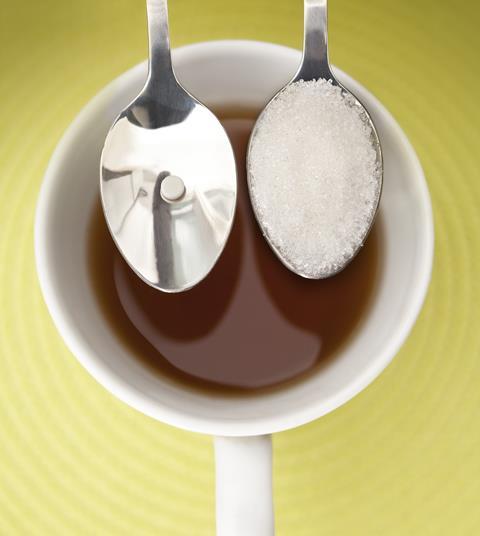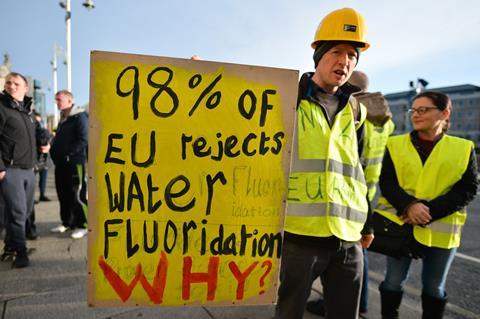Why do people believe conspiracy theories?
In the age of Covid-19, conspiracy theories are all around us. Some say the virus was created by the military, others blame symptoms on 5G technology and some even say the virus doesn’t exist at all. But conspiracy theories are not new. ‘They’ve always been a way of thinking that people turn to in times of crisis, when things are not clear,’ says social psychologist Karen Douglas from the University of Kent in the UK.
A major focus of many conspiracy theories is the chemicals in our water, food and in the air we breathe. One of the most recent is the ‘chemtrails’ theory – the idea that governments are releasing chemicals into the environment via aircraft to control the population. This may seem laughable but recent surveys show a sizeable proportion of the public are open to believing this and other conspiracies, in some cases, with serious consequences.
Conspiracy theories have always been a way of thinking that people turn to in times of crisis
Understanding how these ideas formulate and transmit is becoming a priority for psychologists like Douglas, but what role scientists themselves can play in debunking these theories is still unclear. ‘We have to provide the tools to ordinary individuals to be able to distinguish between reality and misinformation, and so far we’ve been completely unsuccessful in that regard,’ says communications expert Philemon Bantimaroudis from the University of Cyprus in Nicosia. For many, understanding the difference between a real scientific debate and a conspiracy is not always easy.
It’s in the water…
One enduring conspiracy theory is that adding fluoride to public water supplies to reduce dental decay is harmful. After evidence of less decay in areas with naturally high water fluoride levels, community fluoridation schemes started in the US in 1945 and reached the UK in 1964 (although fluoridation is still not UK-wide). ‘We’re not dealing with a minor ailment here,’ says John Morris from the University of Birmingham’s school of dentistry. ‘We’re talking about a chronic disease process that affects around a quarter of children by the age of five in England, [and is] the commonest cause of children being admitted to hospital.’

Fluoride ions interact with tooth enamel to produce fluorohydroxyapatite, resulting in increased hydrogen bonding and a decrease in solubility. ‘It reduces the likelihood of the tooth surface dissolving in the first place, in the face of a challenge from bacteria, and it increases the likelihood that the tooth surface will re-mineralise,’ explains Morris. A recent analysis indicated that fluoridation resulted in children having 35–26% fewer decayed, missing or filled permanent teeth and it is often children in more deprived areas that reap the most benefit.
But objections to fluoridation schemes and conspiracies surrounding the motivations for their introduction began very early on. Debates in the US from the 1950s suggested the schemes were being pushed by the Sugar Research Foundation to focus attention away from the harm of sugary diets. Suspicion also fell on other industries who were said to be pushing fluoridation to find a use for their waste products (both the aluminium and fertiliser industries produce fluoride waste).
The increasingly fractious debate became more and more conspiratorially minded. At the extreme end, water fluoridation was accused of being a communist plot, to create a docile population susceptible to a communist takeover – an idea satirised in the 1964 film Dr Strangelove. But similar accusations circulated at the opposite end of the political spectrum, claiming that fluoride had been used in Nazi concentration camps to passify inmates. A conspiracy theory revived in the 1990s linked fluoridation to the production of nuclear weapons, as uranium isotopes are separated using uranium hexafluoride. The theory asserts that after an 1946 accident caused fluoride contamination around a DuPont-run weapons plant in Deepwater, New Jersey, the Pentagon promoted water fluoridation schemes to redefine fluoride emissions as benign.
But the problem has always been that there is no real evidence of harm. ‘There has been no convincing scientific evidence that water fluoridation at around the UK standard, set at 1mg per litre, is harmful to health,’ says Morris – adding that there are parts of the country with far higher natural levels. What starts to characterise opposition to fluoridation as conspiratorial thinking is the large and changeable nature of harms that have been attributed to it over the years. ‘We have these repeated cycles of “Hang on, there might be a problem with it.” In the 90s, it was cancer … next it is something else,’ Morris explains. ‘[In] San Francisco [it was] related to Aids – that ran for a little while – [and] we had thyroid about five years ago.’ More recently, fears have centred around the effect of fluoride exposures on the intellectual capacity of children and foetuses.
There are tortured arguments over the fluoride ion from fluoridation being a different fluoride ion
The most frequently cited harm, based on mice studies, is bone cancer , but no human studies in reputable journals have supported the carcinogenicity of fluoride. A review carried out by Public Health England in 2018 concluded that in areas with fluoridated water there was no evidence for higher rates of hip fractures, Down’s syndrome, kidney stones, bladder or bone cancer.
Today organisations such as the Fluoride Action Network still argue that water fluoridation is pursued in the interests of industry, and ‘industrial-grade fluoride chemicals’ added to water (unlike the pharmaceutical-grade fluoride added to toothpaste) contain elevated levels of arsenic and lead. They also place a greater emphasis on fluorides causing environmental damage.
Understanding why these conspiracies have not receded after years of safe use is puzzling, but a clear distrust of ‘chemicals’ seems to keep it going. ‘Unlike vaccines, exposure to fluoride would happen anyway as it is naturally present in water. This leads to some tortured arguments over the fluoride ion from fluoridation being a different fluoride ion,’ says Morris. ‘There are also some basic science literacy issues like “Fluoride is a chemical, we’ve heard that chemicals are bad for you, therefore fluoride is bad for you”, or that anything “added” is bad for you.’
…and in your food…
Another similar chemical conspiracy theory arose around the artificial sweetener aspartame, discovered unintentionally in 1965 by chemists James Schlatter at pharmaceutical company JD Searle (which subsequently became a subsidiary of Monsanto). He was developing anti-ulcer drugs and reacted together two naturally occurring amino acids, aspartic acid and phenylalanine. When he licked his finger to pick up a piece of paper, he noticed the sweet taste – perhaps not the best example of good health and safety practice, but Schlatter did say that given the starting materials he felt it unlikely to be toxic! In 1974 it was approved by the US Food and Drug Administration as a low-calorie sweetener.

There had been previous fears around artificial sweeteners. Rat studies in the early 1970s linked saccharin to bladder cancer, but ultimately this was not seen as relevant to human pathology and in 2000 saccharin was removed from the US National Toxicology Program’s list of carcinogens. For the conspiratorially minded, the focus shifted to aspartame, now used widely in diet drinks and low-sugar foods. In 1999 a hoax chain e-mail from a ‘Nancy Markle’ was globally circulated and posted on websites claiming that aspartame has been linked to multiple sclerosis, systemic lupus, blindness, seizures, headaches, depression, anxiety, memory loss, birth defects and deaths, and claiming that the FDA conspired with Monsanto to obtain its original approval, ignoring recommendations from several doctors.
Since then, there have been multiple regulatory reviews, all confirming aspartame as safe, but the conspiracy theories have kept going. In 2005 a study from the Ramazzini Foundation in Bologna, Italy, showed that very high doses of aspartame might cause lymphoma and leukaemia in rats, but the FDA found shortcomings in the methodology and in 2006 the US National Cancer Association concluded that aspartame exposure did not cause tumours. A 2013 European Food Safety Authority report also concluded there were no safety issues , but in 2019, long term critics Erik Millstone and Elisabeth Dawson from the Science Policy Research Unit at the University of Sussex, UK, continued to push the case for neurological effects including blurred vision and headaches, based on reported symptoms in over 250 people who had contacted them. The EFSA has since refuted their claims. A 1987 double-blind trial showed that headaches after consuming aspartame were no more prevalent than in the placebo group.
If you say something that is contrary to the orthodoxy, then you are going to be listened to more
Grasping for a scientific rationale, some of the most recent scares around aspartame have suggested that it causes methanol poisoning. Aspartame is metabolised in the body into aspartic acid, phenylalanine, and low levels of methanol. Methanol is a metabolite of many other foods including tomatoes, but the proponents of this unlikely theory now suggest that methanol from fruits is safe because it is produced alongside ethanol, which is the antidote for methanol poisoning.
While there are few real doubts about toxicity, some of the most recent work on non-caloric sweeteners suggest they may have little benefit to health, and may even be associated with increases in BMI and cardiometabolic risk, so there is still a scientific debate to be had over their value.
In the cases of both fluoridation and aspartame, what has muddied the waters over the years is the involvement of a small number of ‘maverick’ scientist or experts who take up the cause, or whose work is pounced on by conspiracy proponents. ‘There’s often a mascot scientist for a slightly out there view,’ says Tracey Brown, director of Sense about Science, a UK charity that campaigns for scientific thinking among the public and policy makers. ‘Often the scientists get quite frustrated and upset by that experience … it doesn’t actually help them to be championed by people who clearly have other motives behind it.’
Morris suggests some scientists may have more self-seeking motivations. ‘If you say something that is contrary to the orthodoxy, then you are going to be listened to more … if you look hard enough, you’ll find a dentist who believes that milkshake makes a good mouthwash – to quote Dr Nick Riviera from The Simpsons!’ Even those with the highest scientific credentials can be pulled into conspiracy thinking: the 1993 chemistry Nobel laureate Kary Mullis supported the theory that Aids was not caused by HIV, but was a conspiracy of environmentalists, government agencies and scientists to gain career advancement and money.
The science may be easily refutable but that doesn’t mean such conspiracies don’t have an impact. In 2001, the publicity surrounding aspartame lead to UK food retailers Sainsbury’s, Marks & Spencer and Asda removing it from their own-brand diet cola. In 2015 aspartame was removed from Diet Pepsi, and then quietly brought back in 2018. Several communities have chosen to discontinue their water fluoridation schemes and its use is in decline in the US. ‘Where civil authorities, not health authorities, are making those decisions, then they are more swayable, if they get to feel that there is a significant groundswell of opinion against this,’ says Morris. But these decisions have consequences. In one Alaskan town where residents voted to stop fluoridation in 2007, there has been a 16% increase in cavities in children.
…and in the air
Surfacing in the 2000s at the more extreme end of implausibility, was the idea that commercial aircraft spray undisclosed chemicals into the environment, as part of a global conspiracy to subdue populations – or maybe for the less ambitious conspiratorial cabals, just to control the weather. Although most of us know how vapour trails (also known as contrails) form – exhaust water vapour from jet engines rapidly freezes at the low temperatures of high altitude flight – according to Bantimaroudis, analysis of Google search data shows increasing searches for the term ‘chemtrails’ from 2004, with Facebook groups appearing from 2010.
His interest was sparked after informal discussions with his students indicated many were open to this and a variety of web-based conspiracies. In 2016 he and several colleagues surveyed 476 students in Greece, Cyprus and the UK and found 15.8% believed in chemtrails. A 2016 US survey of 1000 people showed about 10% believed chemtrails to be completely true, and another 20–30% ‘somewhat’ true. Bantimaroudis says a new survey he has recently completed shows it now pervades all parts of society: ‘Age is not an issue, even class is not an issue. It’s just spreading across the board.’
People sell all kinds of really weird, extremely expensive objects, which are supposed to protect you from chemtrails
It is difficult to trace the beginning of the chemtrails conspiracy, although the fear of government control certainly mirrors many older theories. Joachim Allgaier, science communication and media researcher at Fulda University of Applied Sciences in Germany, says as with many conspiracies, there is a grain of truth: there have been experiments in weather modification with compounds sprayed from planes. ‘But of course the chemtrails conspiracy totally over-stretches the whole story.’
Some scientists took this seriously enough to publish a study rebuffing the existence of a secret, large-scale atmospheric spraying programme. In 2016 a group of Californian researchers surveyed a number of atmospheric chemists with expertise in condensation trails and geochemists working on atmospheric deposition of dust and pollution to scientifically evaluate the claims. 76 of the 77 scientists that took part confirmed there was no evidence to support chemtrails, and that data cited could be explained through well-understood physics and chemistry associated with aircraft contrails.
Allgaier also questions the motivations of those pushing the chemtrails conspiracy. ‘There have been a handful of actors, and they have made it their full time occupation to post this kind of stuff, [and] my impression is that most of it is US-based and they’re actually living from donations.’ These conspiracies become cash cows for those making YouTube videos which receive millions of views. Preying on the fears of those consuming the conspiracies, they are also selling antidotes and ‘all kinds of really weird, extremely expensive objects, which are supposed to protect you from chemtrails’, says Allgaier.
But the danger is not only to the individuals being conned. Chemtrails conspiracies have now hijacked the legitimate scientific debate around solar geoengineering. Solar geoengineering describes technologies that could remove carbon dioxide from the atmosphere or reflect more sunlight away from the planet. While still considered very risky, a growing number of researchers are running computer simulations and proposing small-scale experiments. ‘What made it really easy for [conspiracy theorists] was that there was simply no good [scientific] material or content [on geoengineering] available on platforms like YouTube, because no [scientist has] posted it, so they could easily post their usual conspiracy videos, and just replace the chemtrails term with the geoengineering term,’ explains Allgaier. ‘They have been extremely successful doing that. They [have] basically occupied the term.’ The problem became such an issue that David Keith’s solar geoengineering group at Harvard University, US, added a disclaimer to their website explaining their work is not linked to chemtrail conspiracies.
The conspiracists have hijacked other aspects of normal scientific communication to portray themselves as scientific experts. ‘If you use the supposedly scholarly database, Google Scholar, and type in geoengineering, even there, you will be directed to [conspiracy] websites,’ says Allgaier. ‘It’s very difficult for people who don’t really know a lot about science to make sense of this thing.’ He worries that in the future, climate engineering may need to be seriously debated to counter the impacts of global warming. ‘Of course, if the information ecosystem is already poisoned, if people type in geoengineering and then conspiracy-related content comes up, it’s extremely harmful for serious public discussion of the issue.’
So how do we deal with it?
What leads people to embrace conspiracies is not straightforward, according to Douglas. ‘Back in the early days, when people like me started studying conspiracy theories, and why people believe them, we did think there’s got to be certain personality types or demographic variables that attract people towards these things,’ she explains. But now, Douglas argues, ‘it’s more about psychological needs or motives’. People are looking for answers and certainty surrounding an issue, or for safety and a sense of control over their lives and they are often looking for a sense of belonging and community within a like-minded group. ‘At any given time, if people are experiencing these psychological needs, then they might be more likely to turn to conspiracy,’ says Douglas.

Brown explains that Sense About Science has recently been working with a team at the University of Manchester in the UK to try and understand aspects of current Covid-19 conspiracies. ‘There is a big section of society, for whom control over your own life is fairly minimal … and there’s very definitely a strengthening of that feeling at the moment,’ says Brown.
The feeling that conspiracism is on the rise may also be related to the ease of transmission via social media. ‘Extreme voices have a better capacity to be heard now,’ says Bantimaroudis. ‘They make more noise and they mix with scientific voices so it becomes an ocean of information … and people are confused.’ Douglas says there’s not really a lot of evidence that conspiracy theories have increased with the rise of social media, but agrees it may be responsible for an increasing polarisation and reinforcement of such views. ‘You could end up with a situation where people enter these echo chambers and then just absorb all of this information, become resistant to outside information, and then their conspiracy beliefs become stronger,’ she explains.
As scientists, we need to get our hands dirty, find the venues used by lay people, talk to them and keep talking to them
So how should the scientific community deal with conspiracies? ’That is the million-dollar question!’ says Douglas. ‘Those sorts of beliefs can become very strongly held and very resistant to change.’ A more fruitful solution may be to try and help people spot conspiracy theories early on. There is an ongoing battle with technology companies to get them to remove conspiratorial content, which YouTube has done since 2018, but Allgaier says there are still is plenty of it out there.
Researchers studying conspiracy theories are looking to provide people with tools to help them to spot the tell-tale signs of false and conspiratorial information on social media, like accounts that have no followers, or include contradictory features. Allgaier would also like to see scientists cooperate with social media influencers to reach wider audiences. ‘In Germany, the Max Planck Society has been teaming up with some science YouTubers who already had a big base of followers to reach people it would normally not have reached on its own.’
Bantimaroudis has concluded that the worst tactic would be to withdraw from the discourse. ‘As scientists, we need to get our hands dirty, we have to find the venues used by lay people, talk to them and keep talking to them.’ He acknowledges this requires patience and can be discouraging work. Brown also warns it’s important not to mock those who may believe conspiracies. ‘You don’t have to respect their view, or the laziness in their thinking, or the particular thing that they’ve shared, but you can be respectful for somebody’s need for answers.’
One of the greatest ironies is that chemical-related conspiracies do little to hold the chemical industry and government regulators to account where real problems do exist, reflects Brown. ‘There have been times where people have hidden information or sat on things … but [conspiracy theories] don’t get [us] any closer to picking up those things,’ she argues, pointing to the 2015 water crisis in the US city of Flint, Michigan, where over 100,000 residents were exposed to elevated lead levels, causing neurological damage to thousands of children.
‘To have a sceptical impulse is a reasonable thing – to question what you’re told, to know that you get a varnished version of what’s going on in the world when you’re listening to people who’ve got skin in the game – that’s actually a reasonable position to take in the world,’ says Brown. But ultimately the message needs to be that it’s scientists, not conspiracists, who have the tools to find the truth.
Rachel Brazil is a science writer based in London, UK
This article has been archived for your research. The original version from Google News can be found here.


